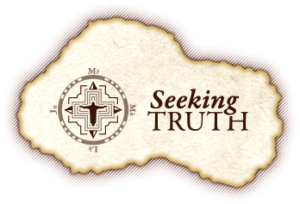Podcast: Play in new window | Download (Duration: 30:44 — 21.1MB) | Embed
Subscribe: Apple Podcasts | Spotify | Amazon Music | Android | Pandora | iHeartRadio | JioSaavn | Podchaser | Gaana | Podcast Index | Email | TuneIn | Deezer | Anghami | RSS | More
Episode 34 – John 16 – The Holy Spirit part 2

As we draw close to the passion, John 16 focuses our attention on the Holy Spirit and the Trinity. Throughout John’s Gospel, we have read about the theme of “The Hour.” Jesus tells his apostles that the hour is now here, not only for himself but also for them.
Before moving into John 16, Sharon shares additional insights on Jesus, the True Vine of Chapter 15. From last week, we recall that Jacob gave his blessing to Judah and his birthright to Joseph and that these two “vines” point towards Jesus, the True Vine. After the time of the kings, the kingdom of Israel divided into northern (descendants of Joseph) and southern tribes (descendants of Judah), with the northern tribes being scattered further through the diaspora. So, how does Jesus reunite these two vines, bringing together the blessing and the birthright of Israel? The answer can be found in Ezekiel 37 where the Lord tells the prophet that he will combine the sticks of Joseph and Judah into one stick, gathering them together into one nation. This prophecy is fulfilled on the horizontal and vertical wood of the cross, where Jesus becomes the king over not only a united Israel, but over the entire world.
Moving on to John 16, Sharon draws our attention back to the Trinity, a word never actually found in the Bible, yet present through all scripture. In the 1st century AD, Tertullian first used the word “Trinity” and the doctrine was developed over the following centuries. We learn that a controversy between the Roman Catholic and Eastern Orthodox churches stems from a disagreement over Trinitarian doctrine. The Roman Catholic Church believes in the Nicene Creed “filioque” which states that the Holy Spirit proceeds from both the Father and the Son, while the Eastern churches believe the Holy Spirit proceeds only from the Father.
We learn also that John 16 predicts the persecution of the early Church, when Christians were cast out of the synagogue and thrown into jail by Saul. We also learn that unless Jesus left the world, the Holy Spirit would not come. The Holy Spirit convicts (but does not condemn) the world, convincing us of sin, righteousness and judgement. Finally, Sharon ends with a wonderful look at the famous Rublev icon of the Trinity, which depicts the Father, Son and Holy Spirit in the setting of the three visitors to Abraham at the oaks of Mamre, where many of the mysteries of the Trinity are unveiled.
Sharon Doran serves as the teaching director of “Seeking Truth.” An experienced Bible Study teacher, Sharon has a passion for scripture that will motivate and challenge you to immerse yourself in God’s Word and apply His message to your everyday life.
For more in this series visit the Seeking Truth with Sharon Doran Discerning Hearts page
 “Seeking Truth” is an in-depth Catholic Bible Study, commissioned by the Archdiocese of Omaha in response to John Paul II’s call to the New Evangelization as well as Pope Benedict XVI’s exhortation for all Catholics to study scripture. To learn more go to www.seekingtruth.net
“Seeking Truth” is an in-depth Catholic Bible Study, commissioned by the Archdiocese of Omaha in response to John Paul II’s call to the New Evangelization as well as Pope Benedict XVI’s exhortation for all Catholics to study scripture. To learn more go to www.seekingtruth.net

